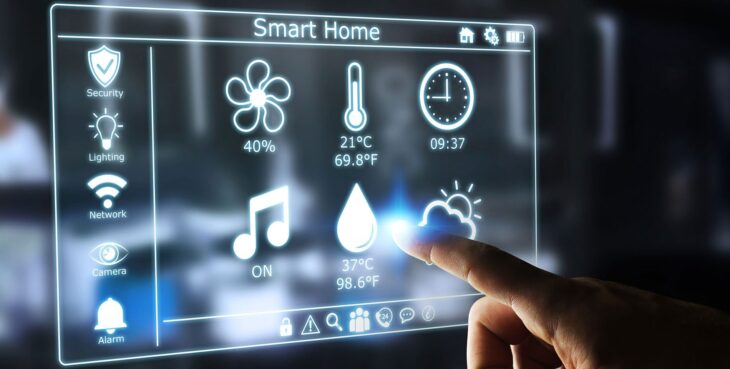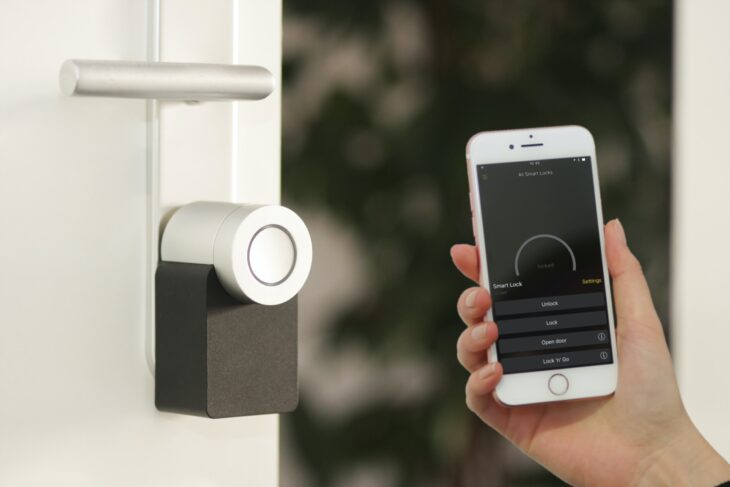Even if you don’t consider yourself an early adopter, the sort of consumer who’d wait in line for hours to get their hands on a hot new phone or console before anyone else, you probably have in-home devices that qualify as “smart.”
A learning thermostat. A video doorbell. A WiFi-enabled home security system. WiFi-connected light bulbs and fixtures. A smart speaker.
The list goes on. Clearly, smart home technology is here to stay.
But perhaps you’ve held off on going all-out to smarten your home because you’re concerned about the implications for your family’s privacy, data security, even physical safety. You’re worried that the convenience of a truly connected home comes with unacceptable trade-offs.
That sort of thinking is understandable but outdated. Today’s smart home technology is developed and deployed with safety- and security-conscious homeowners in mind. It’s made to help homeowners sleep better at night, rather than stay up worrying about what-ifs.
And its applications are more versatile than ever. According to Plume.com, a new crop of smart home solutions is emerging that’s different enough from the first wave of innovations to deserve a new name: Smart Home 2.0. These new solutions lay at the core of a connected lifestyle that your parents could only dream of.
Here’s how to make the most of that lifestyle — and your newly connected home.
Contents
- 1. Invest in a Home Automation Hub
- 2. Integrate Your Smart Home and Its Service Calendar
- 3. Outfit Your Smart Home With Customized, Adaptable, Secure WiFi
- 4. Bring Your Smart Home’s Motion Detection
- 5. Use Geofencing to Keep Home-Watchers Guessing
- 6. Always Use Two-Factor Authentication
- A Smart Home Is a Safe Home
1. Invest in a Home Automation Hub

img source: tomsguide.com
You can outfit your home with all the high-tech systems you want, but you can’t really call it a connected home unless and until those devices work together.
The simplest way to do this is through a single hub that controls every smart device or system in your home. Whether that’s a smart speaker, a smartphone app, or ideally both, the end result is the same: total visibility into and control over the automated systems that make your home a safer, more welcoming place to live.
2. Integrate Your Smart Home and Its Service Calendar
When you say it like that, it sounds like a no-brainer. Why would anyone separate their smart home systems from the service calendar that ensures they operate at peak performance with minimal downtime?
Because that’s the way it’s always been done. Before the advent of Smart Home 2.0, this was forgivable. Homeowners just had to accept the need to monitor device operation locally and do the work of scheduling service themselves.
That’s no longer necessary. The latest smart home devices monitor their own operation and performance, alert their owners and the appropriate service personnel when problems arise, and schedule service at a time that works for the homeowner. No more waiting on hold or navigating an ancient online self-service portal to set up a repair visit.
3. Outfit Your Smart Home With Customized, Adaptable, Secure WiFi

img source: panzeri.it
A truly connected home relies on fast, reliable, adaptable WiFi. When you depend on Internet-connected systems to keep your home efficient and orderly, “good enough” WiFi doesn’t cut it.
Invest in a home network that adapts to your household’s data needs, uses enterprise-grade, AI-powered security protocols to detect and defuse threats, and allows you to fine-tune access and permissions. The best smart home WiFi systems enable tiered access that keeps guests or service personnel from accessing sensitive devices, built-in parental controls to limit screen time, and wall off your home from malicious actors.
4. Bring Your Smart Home’s Motion Detection
There’s a good chance your home already has motion-sensing floodlights that flick on when they detect movement in your yard or driveway. It might have window- or door-mounted motion sensors as part of its external security system too.
So why doesn’t it have interior motion detection capabilities? With a next-generation smart home WiFi network that silently tracks motion from room to room, it can.
The security benefits here are obvious. Internal motion sensing can alert you when an authorized repair person enters a part of the house they’re not supposed to be in. But interior motion detection also offers clear convenience and cost benefits: lighting and cooling only occupied parts of the house, for example.
5. Use Geofencing to Keep Home-Watchers Guessing

img source: newgenapps.com
Nervous about leaving your smart home for a well-deserved vacation? Concerned that even a day trip leaves your property vulnerable to opportunistic burglars?
Keep home-watchers guessing by adding geofencing capabilities to your smart home setup. You can click here to learn more, but basically a “geofence” is just as it sounds: an invisible perimeter around your home. When you venture outside this perimeter, your home kicks into something like “away” mode, turning down the thermostat, activating the security system, and — perhaps most importantly — strategically rotating interior and exterior lights to sustain the illusion that the home is occupied.
6. Always Use Two-Factor Authentication
“Use two-factor authentication” is a universal tech tip, a sort of golden rule of digital security. In fact, you should be wary about using any sensitive tech system that doesn’t allow you to pair a password with another form of authentication, like a unique SMS code or fingerprint scan. You can visit this site to learn more about two-factor authentication and how to set it up.
In the context of your smart home, make sure two-factor authentication is enabled for all smart home systems. It’s there for a reason — to encourage you to restrict access to your smart home systems (and the home itself) to those you trust unconditionally. After all, it’s much safer to use your phone to unlock the front door for the air conditioner repair person than to give them access to your home hub.
A Smart Home Is a Safe Home

img source: unsplash.com
A connected dwelling equipped with the best of Smart Home 2.0 isn’t just a convenient, engaging space. It’s a safe home, a respite from the outside world for your loved ones and guests.
As we’ve seen, it’s not difficult to achieve. From investing in a smart home hub that controls all its connected systems to upgrading your WiFi to a next-gen solution that’s secure and adaptable, many of the tips and tricks to increase your home’s safety and security — and make the most of those welcome attributes — are simple enough.
Finding the time to implement them? That’s another issue. But by automating many of the rote tasks we all have to do every day and freeing up mental bandwidth to focus on the next challenge, perhaps the early phases of your connected home rollout will help lay the foundation for what’s next — and complete that rollout sooner rather than later.
